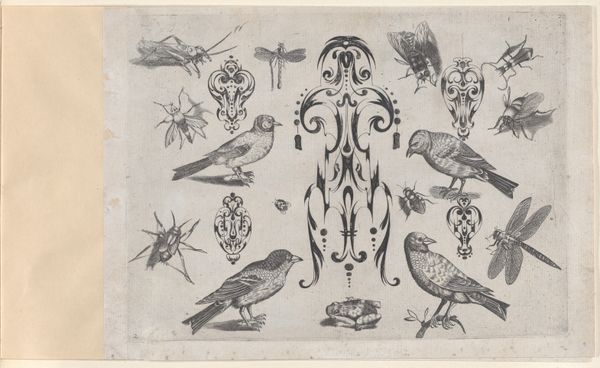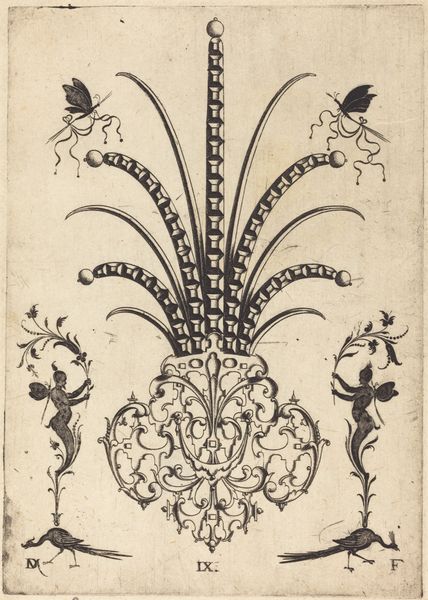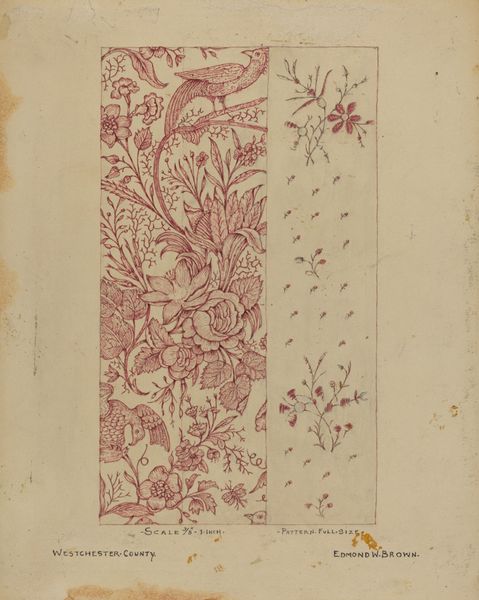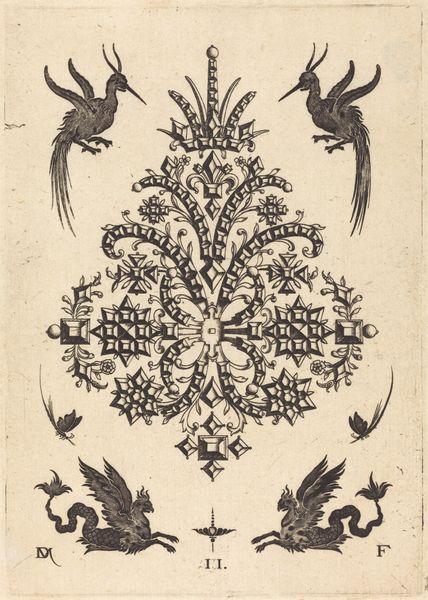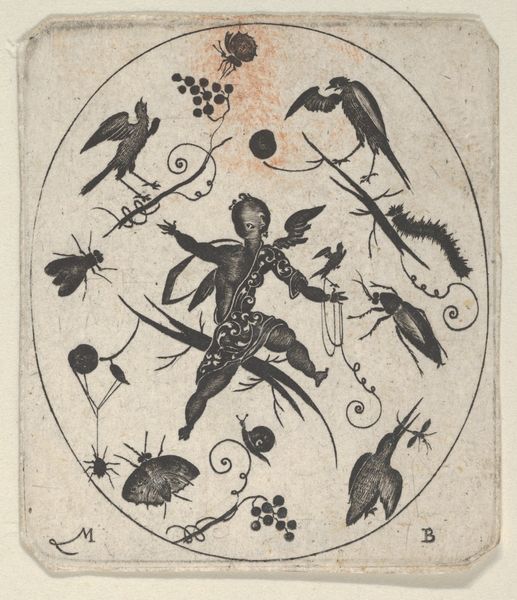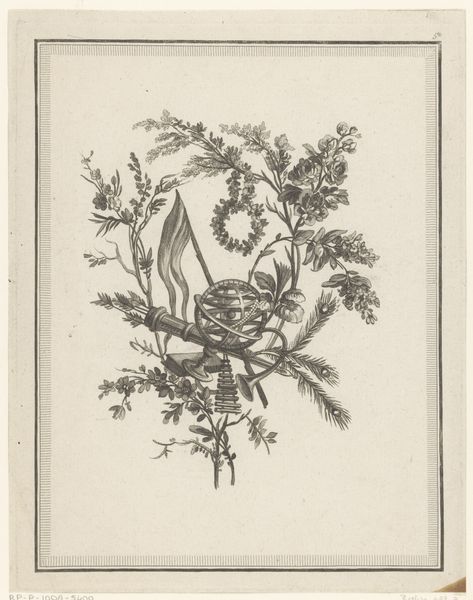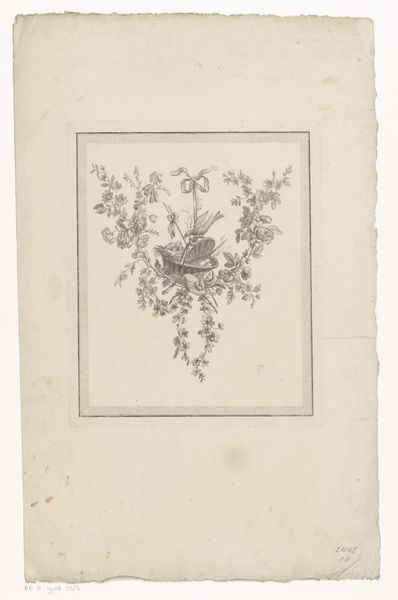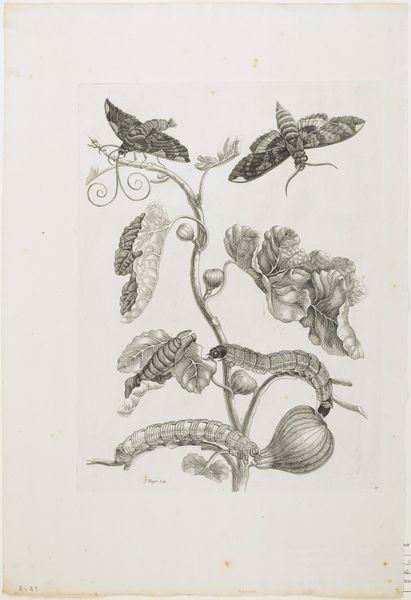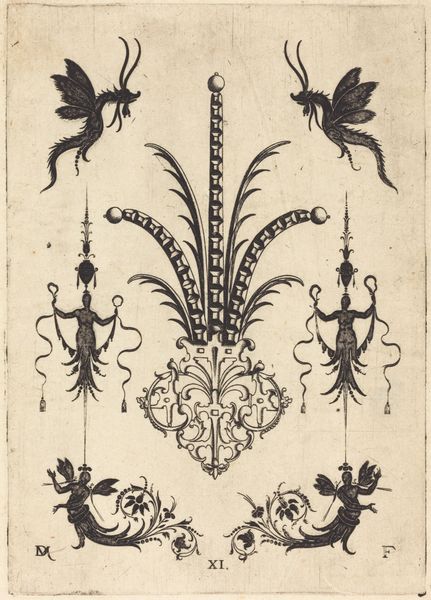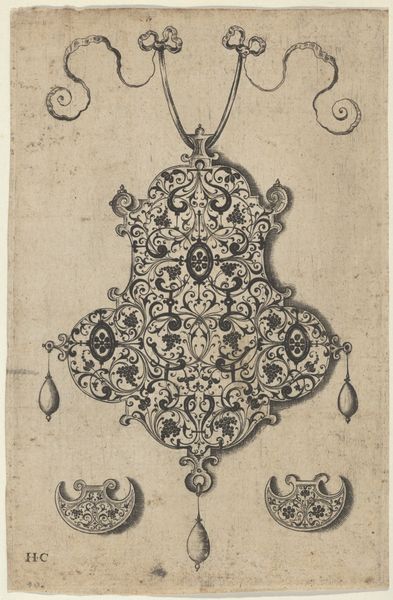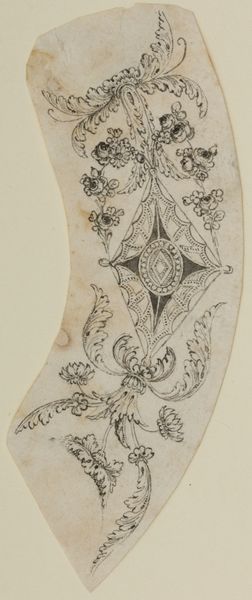
Oval Blackwork Print with Birds, Insects and Fruits 1600 - 1620
0:00
0:00
Dimensions: Plate: 2 x 1 9/16 in. (5.1 x 4 cm)
Copyright: Public Domain
Curator: This intriguing print, "Oval Blackwork Print with Birds, Insects and Fruits," dates from between 1600 and 1620. It's currently held at the Metropolitan Museum of Art. Look at how the anonymous artist has populated the oval shape with such a variety of motifs rendered in solid black. Editor: It feels a bit like a garden seen through a dream, stark yet bursting with life. The contrast of black against the bare paper makes everything so graphic. It’s charming but has this serious, almost ominous quality to it. Curator: That starkness is intrinsic to blackwork prints. The process, likely a woodcut or engraving, would involve meticulously removing material from the block, leaving behind the design in relief. The labor and precision that went into crafting this are remarkable. The consumption of prints like this reveals interesting class dynamics from the Renaissance and beyond. Editor: Absolutely. I can't help but think of it as a meditation on impermanence. The insects and the ripening fruit hint at cycles of growth and decay. It feels like a celebration, but also a gentle reminder of mortality. What kind of interior do you think would showcase this artwork? Curator: I'd argue its modest scale and accessibility mean that such a print might have originally served decorative and educational purposes across diverse classes, showcasing newly discovered flora and fauna, circulating knowledge within households. Today we elevate and "exoticize" works in a museum context which in effect also raises prices... How does that consumption dynamic affect your impression of its "charm"? Editor: Point taken. I see how its contemporary placement affects perception. Though now encased, something about the directness of the image still transcends all of that noise. All those sharply rendered details – each insect leg, the curve of every piece of fruit– add up to something very delicate, very human. Curator: Yes, it encapsulates its time in a remarkable way. From production methods to materials to consumption practices. It allows us a lens through which we can visualize labor relations from the 16th century. Editor: Indeed. Seeing it this way allows for a different, perhaps more connected, experience with it, which feels great.
Comments
No comments
Be the first to comment and join the conversation on the ultimate creative platform.
